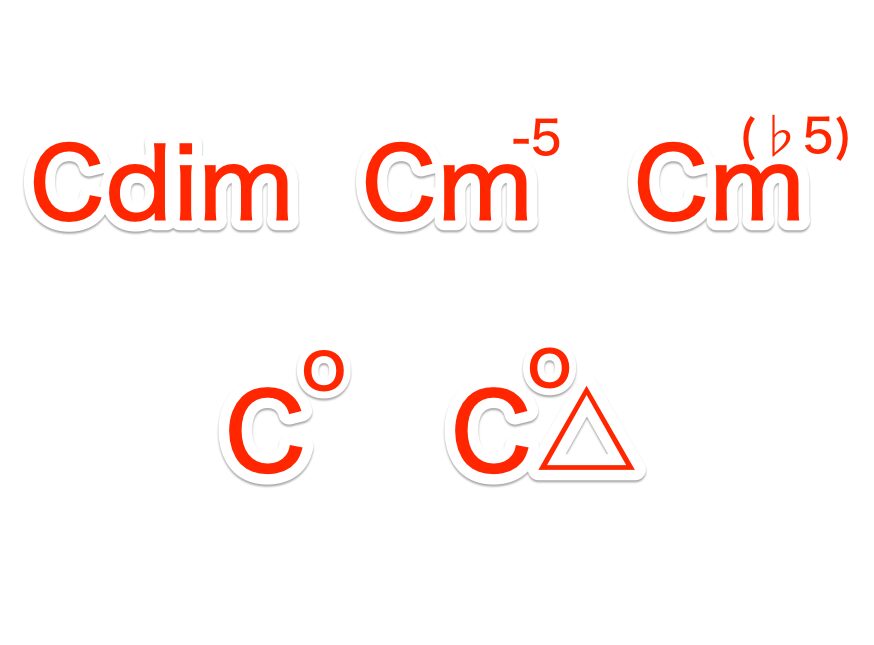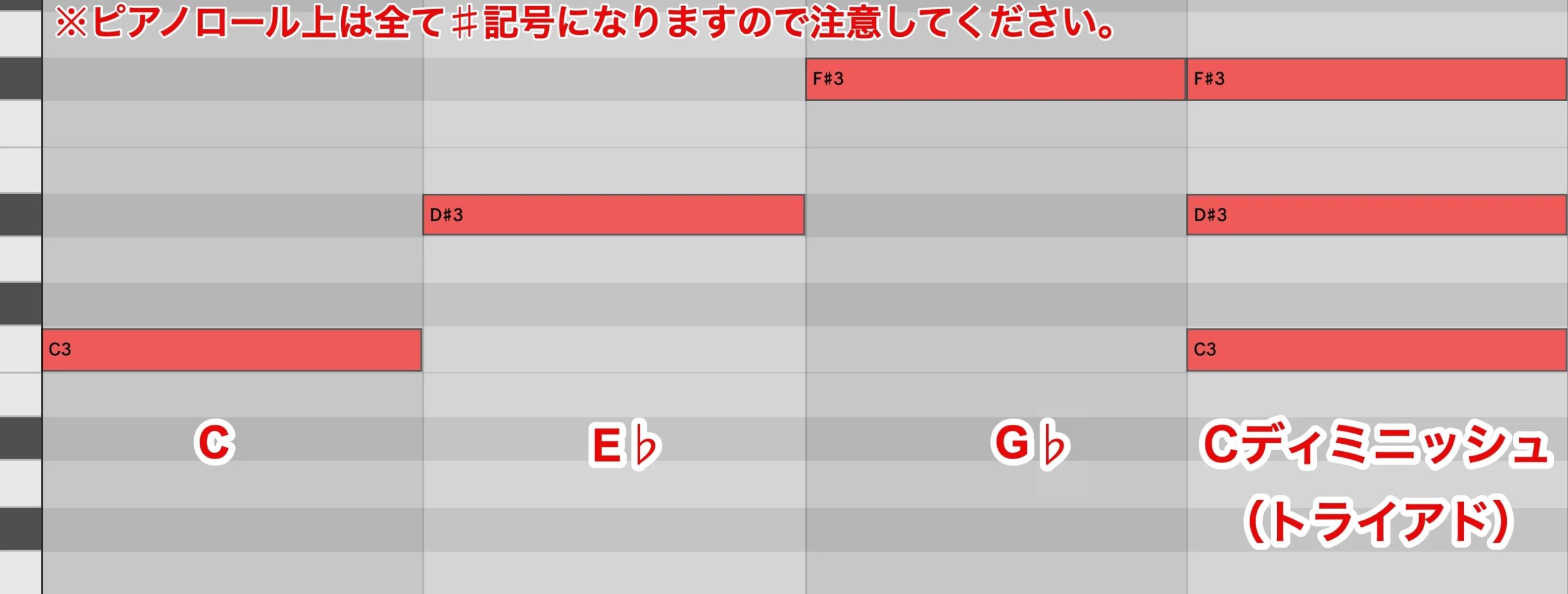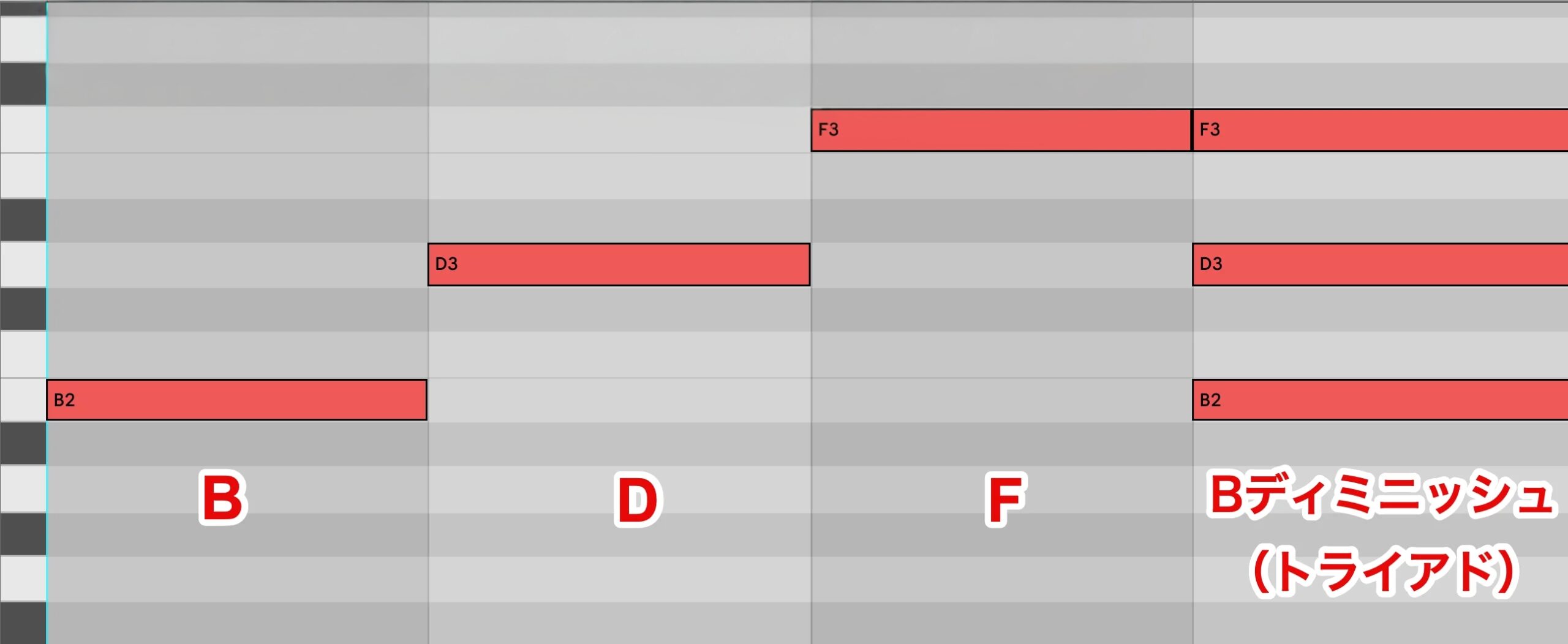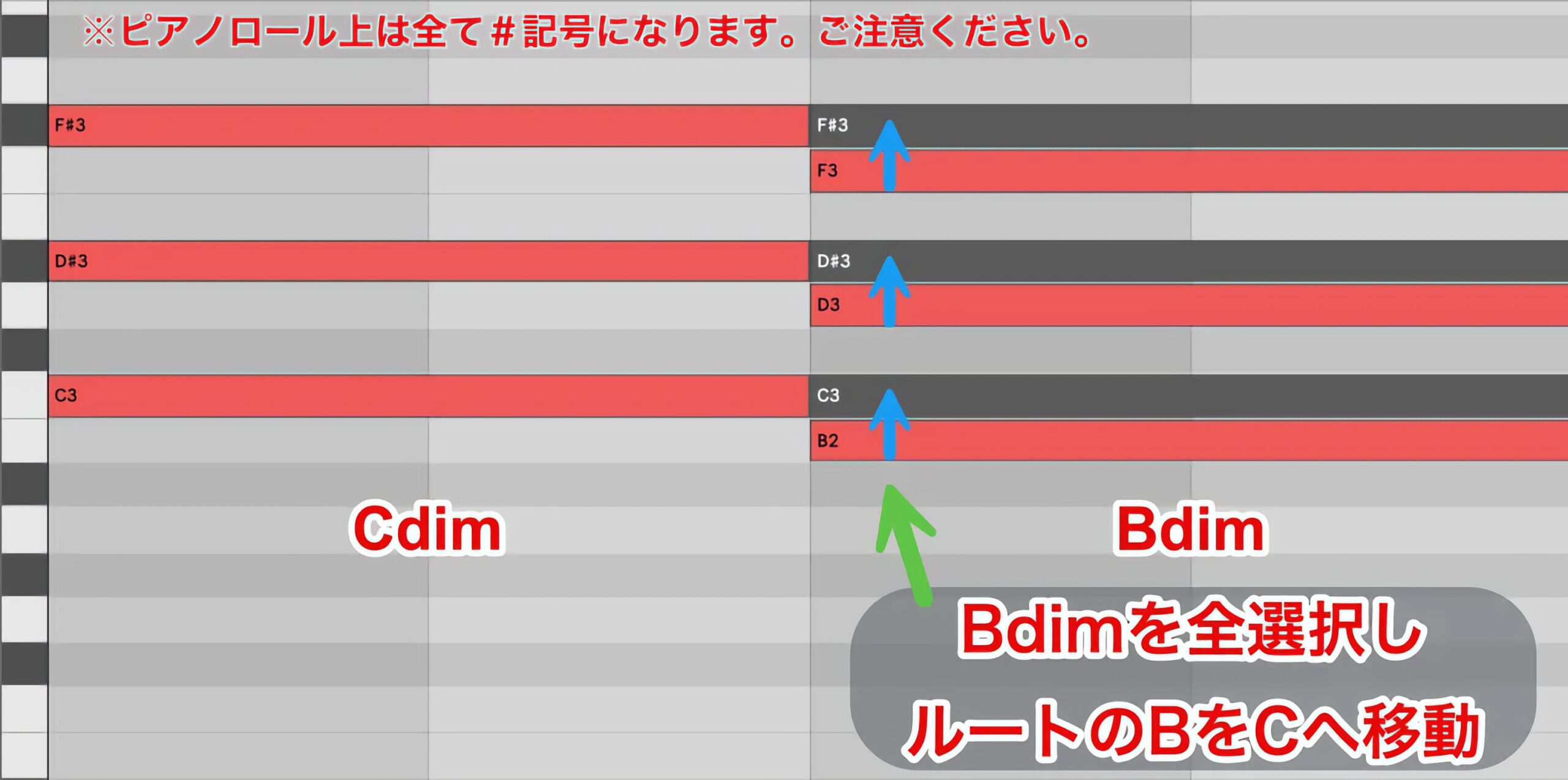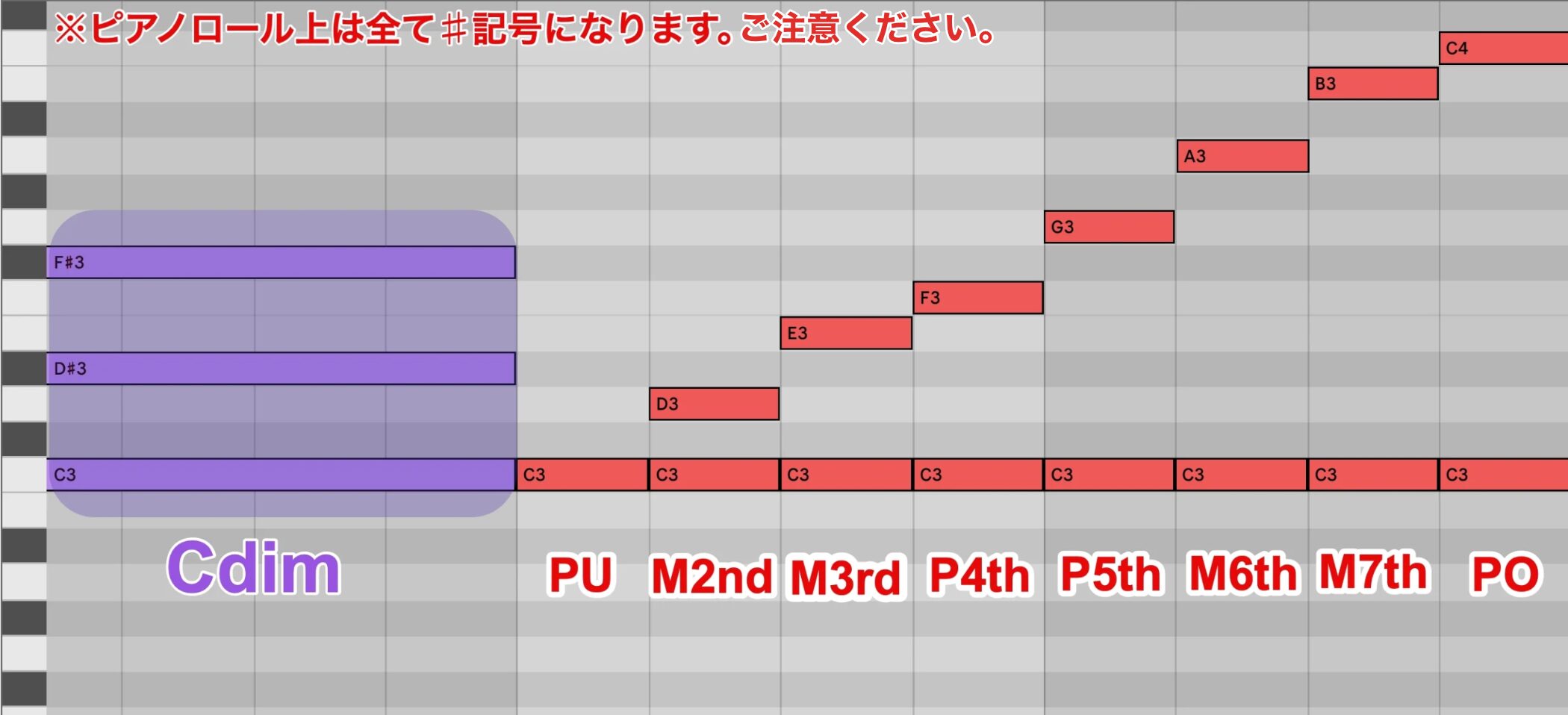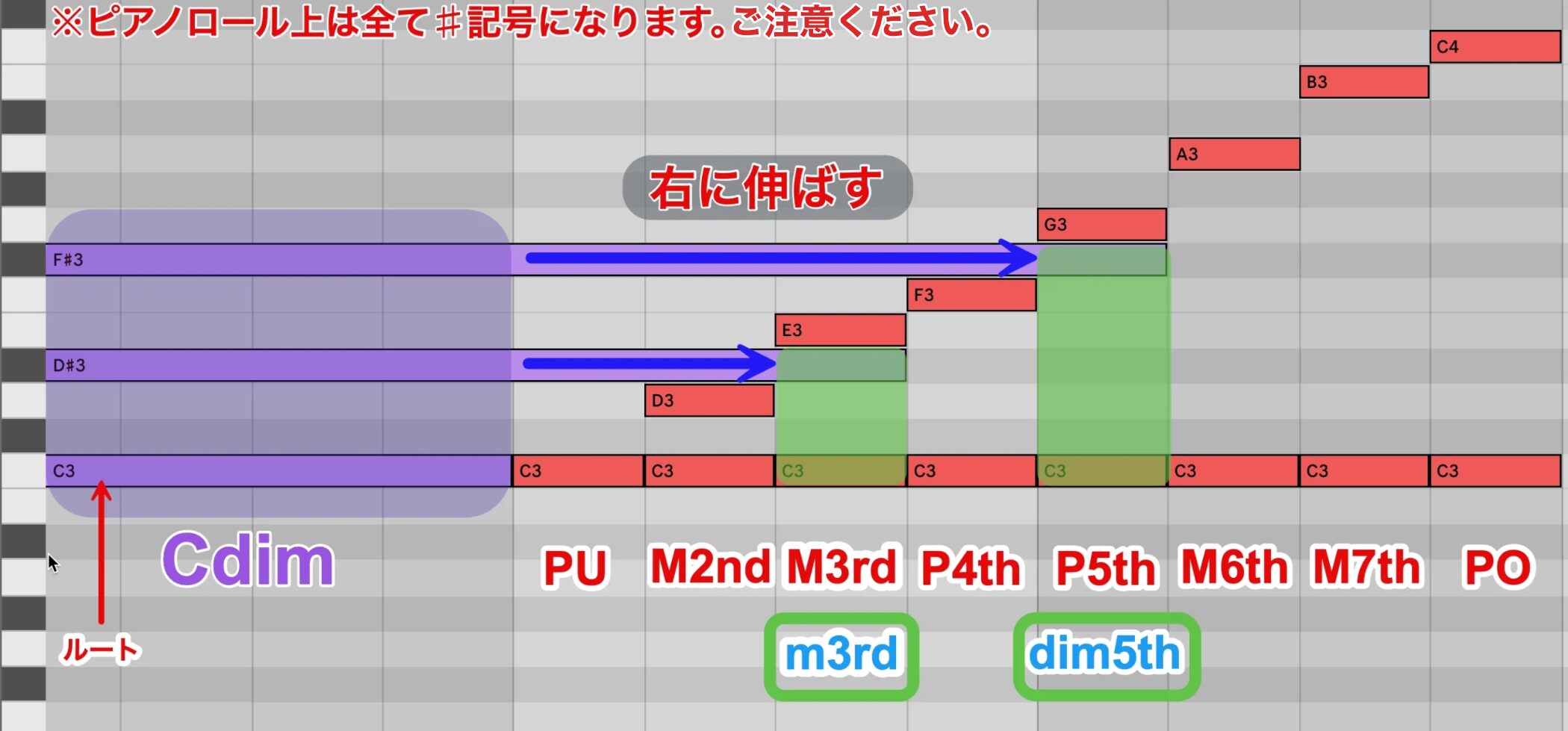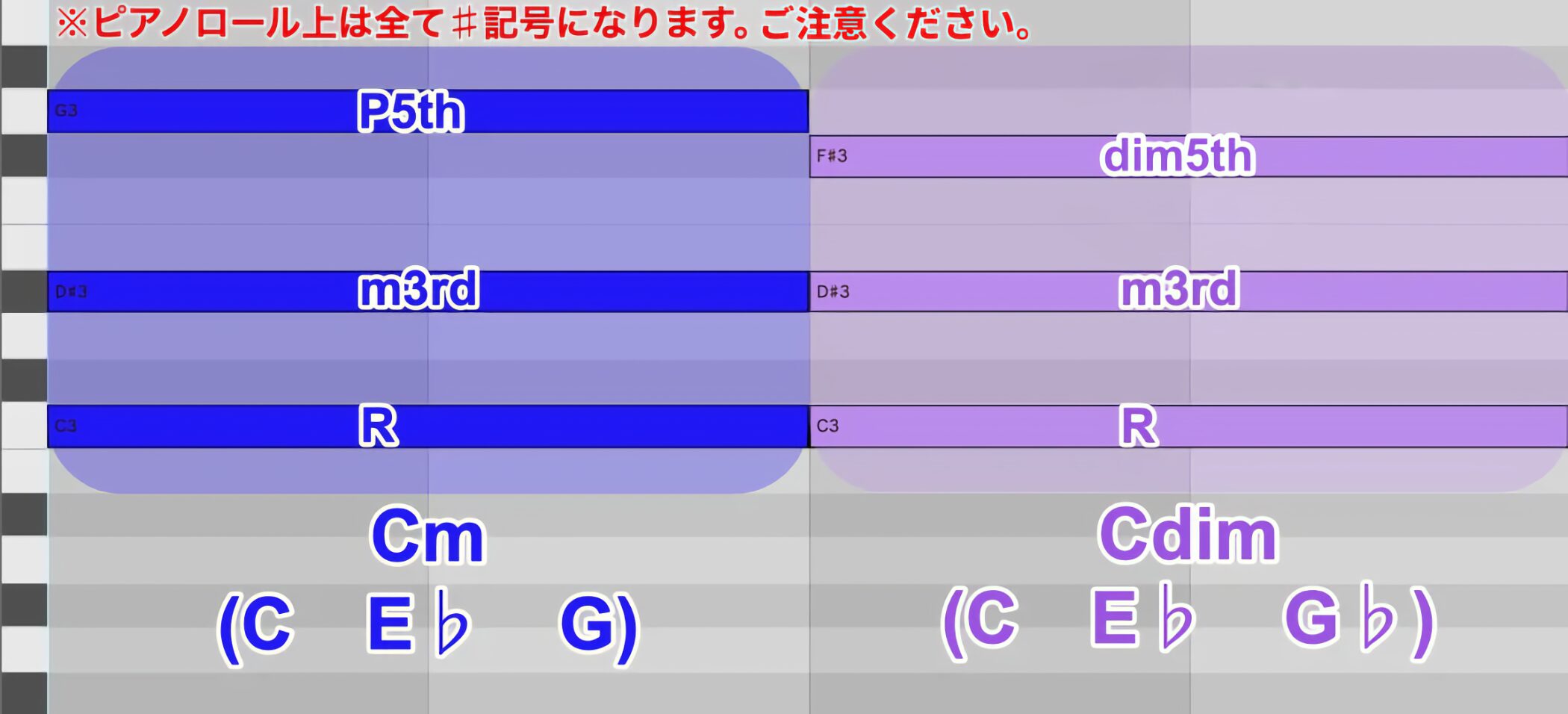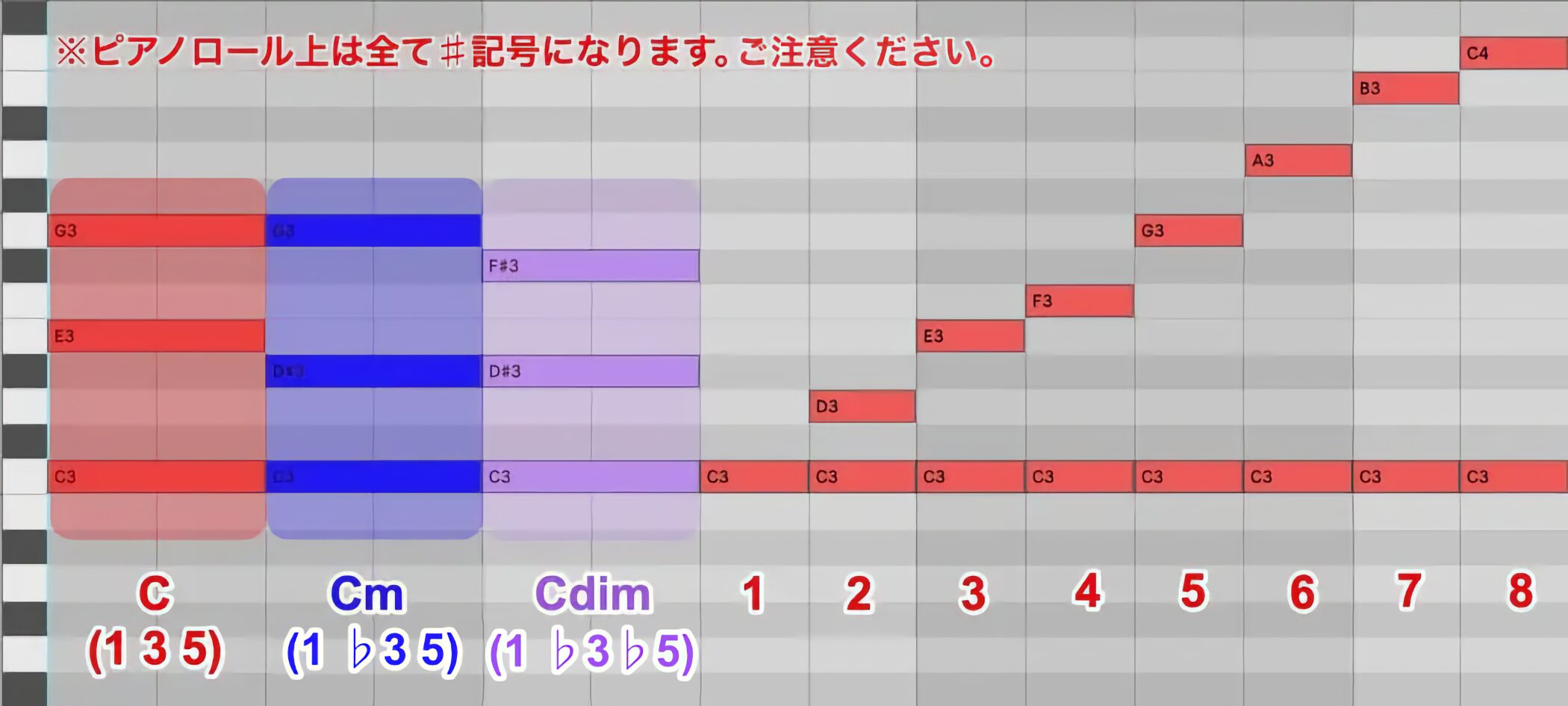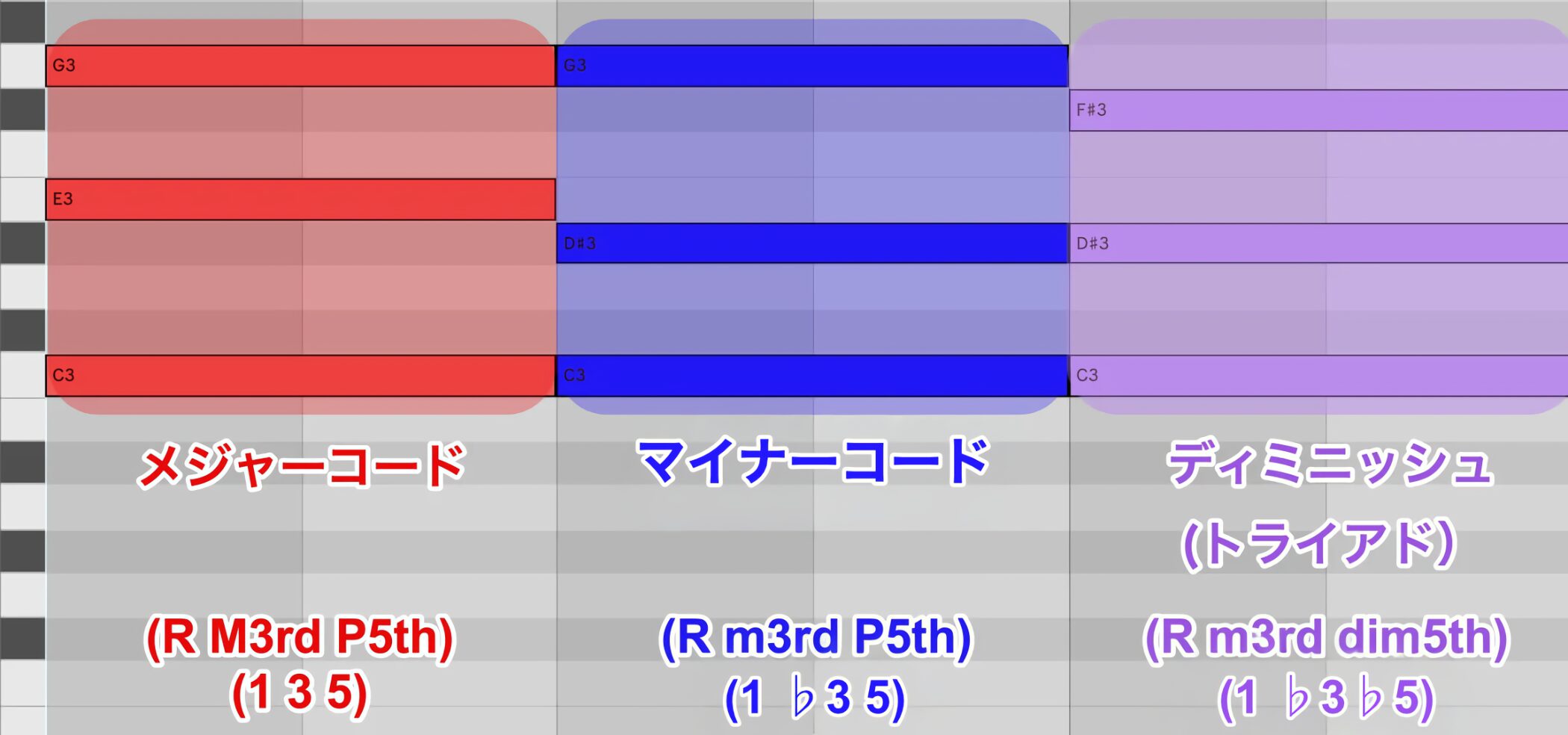三和音(トライアド)のディミニッシュコード/音楽理論講座
特徴的な響きを持つディミニッシュコードを把握する
これまで、メジャーコード、マイナーコードの作り方を確認してきました。
今回は、ディミニッシュコードを確認していきましょう。
✴︎4和音の時も「ディミニッシュ」と呼ぶこともあります。
ここではディミニッシュコードをトライアド(三和音のコード)とし、
4和音の方を、ディミニッシュセブンスコードとします。
まずはサウンドを確認してみましょう。
コードの構成音を鳴らした後に、コードが鳴ります。
なんだか、怪しい響きのするコードですね。
ディミニッシュコードの表記
ディミニッシュコードは下記のように表記されることが多いです。
一般的なものとしては、以下のような表記です。
- Cディミニッシュコード = Cdim
- Dディミニッシュコード = Ddim
上の表記例では、メジャーやマイナーでは見られなかった「-5」や「b5」など「5」という数字が特徴的で、ディミニッシュコードを作る上で重要な役割を持っていそうですね。
ディミニッシュコードの構成音
譜面とピアノロールでCディミニッシュコードを確認してみましょう。
ルートの音CにE♭(短3度)とG♭(減5度)が重なっています。
次に、Bディミニッシュコードも確認してみましょう。
コードの構成音を鳴らした後にコードが鳴ります。
構成音は下記となります。
Bディミニッシュコードは白鍵のみで構成されています。
とてもシンプルですね。
CディミニッシュコードとBディミニッシュコードの構成音がわかったところで、双方を比較してみましょう。
Bディミニッシュコードを全て選択しルート音がBからCになるように移動してみると、
両方ともCディミニッシュコードになりました。
ディミニッシュコードにも重ねる音に法則がありそうです。
インターバルでの理解
インターバルとは、音と音の距離のことでしたね。
Cディミニッシュコードの音がルート音にどのように重なっているのかを、インターバルの観点から確認していきましょう。
Cをルートとして、その上に重ねたE♭とG♭を右に伸ばすと、以下のようになります。
ディミニッシュコードとメジャーコード、マイナーコードを比較するとどのようになっているでしょうか。
それぞれ比較画像を用意しましたので見ていきましょう。
まず、メジャーコードは、R,M3rd,P5th(1,3,5)でしたね。
ディミニッシュコードはメジャーコードと比べると、M3rdが半音下がりm3rdに、P5thも半音下がりdim5thになっています。
インターバルの学習の際に、パーフェクトと名の付くインターバルが半音下がるとディミニッシュになるとお伝えしましたね。
今度は、マイナーコードと比べてみましょう。
マイナーコードは、R,m3rd,P5th(1,b3,5)でしたね。
ディミニッシュコードはマイナーコードと比べると、m3rdは共通で、P5thが半音下がりdim5thになっています。
スケールディグリーでの理解
次にスケールディグリーでも確認しましょう。
- メジャーコード:1, 3, 5
- マイナーコード:1, ♭3, 5
- ディミニッシュコード:1, ♭3, ♭5
となります。
三和音(トライアド)のまとめ
最後に、今まで出てきたトライアドのコードをまとめてみましょう。
他にもコードはたくさんありますが、今はこれらで十分です。
各メジャースケールを練習し、1,3,5で全てのメジャーコードを作成できるようにしましょう。
その上で各コードの違いを理解していれば、他のコードへ容易に辿り着けます。
次回は、四和音のコードを確認していきます。
実践的な作曲までもう一歩です。
頑張りましょう!






